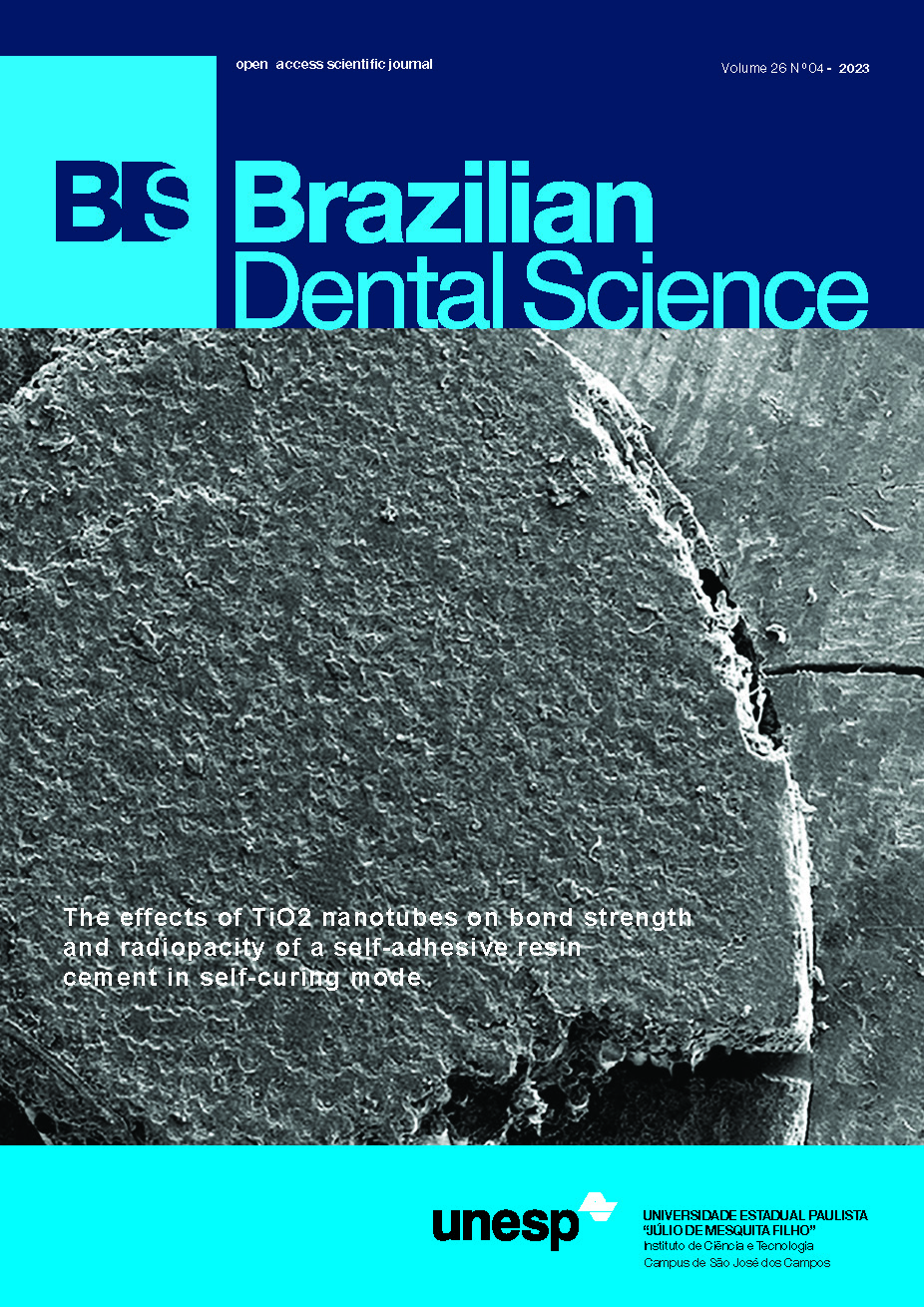Comparison of shear bond strength and color reproduction of two different high-performance polymers veneered with two different thicknesses of resin composite: an in-vitro study
DOI:
https://doi.org/10.4322/bds.2023.e3959Abstract
Objective: to evaluate the effect of material type and veneer thickness on the final color and shear bond strength of PEEK bilayered restorations. Material and Methods: sixty-four square-shaped core specimens (7×7×2), were fabricated by CAD/CAM technology from two high-strength polymers, BioHPP (High-Performance Polymer, group B n=32), and Pekkton® ivory (PolyEtherKetoneKetone, group P n=32) then were veneered with resin composite (crea.lign dentin A3). Specimens from each group were divided (n=16) according to the veneer layer thickness (0.5 & 1 mm), then according to the test applied (n=8), either deltaE or shear bond strength (SBS). Specimen surfaces were treated according to the manufacturer’s instructions. Specimens were veneered according to the manufacturer’s instructions.The mode of failure was evaluated under a stereomicroscope at 40 x magnification after the shear bond strength test. Results: data showed parametric distribution and variance homogeneity and were analyzed using two-way ANOVA. The significance level was set at p<0.05 for all tests. Statistical analysis was performed with the R statistical analysis software version 4.3.1.Results of two-way ANOVA showed that material types and veneer thicknesses had an individual significant effect on the color change. For the shear bond strength, only the sample thickness (1mm) had a significant effect (p=0.033). The majority of samples in different groups presented a mixed failure mode with all the differences being not statistically significant (p>0.05). Conclusion: the thickness of the resin composite veneer can significantly affect the final esthetic outcome and shear bond strength of a bilayered restoration.
KEYWORDS
Composite resins; Polymers; Polyetheretherketone; Polyetherketoneketone; Shear strength.
Downloads
Published
How to Cite
Issue
Section
License
Brazilian Dental Science uses the Creative Commons (CC-BY 4.0) license, thus preserving the integrity of articles in an open access environment. The journal allows the author to retain publishing rights without restrictions.
=================




























